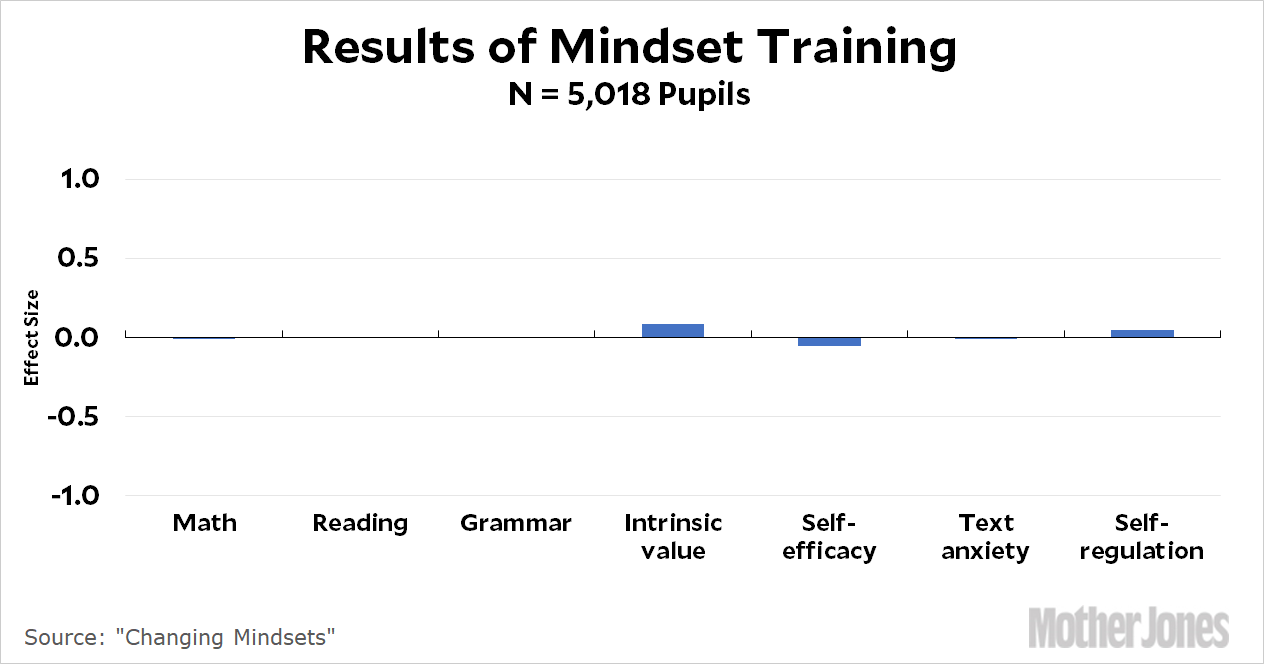Unlike past years, only a few of this year’s top charts show something interesting and new. Instead, they’re mostly things we all know already that we could stand to be reminded of. Here they are:
1. CO2 Emissions
What’s important about this chart is not that CO2 emissions are rising. What’s important is they’re rising at the same rate as they have for the past 50 years. Despite decades of warnings from scientists and calls to action from activists, the world has collectively done nothing. This is a word I use advisedly. It’s obviously not literally true that we’ve done “nothing,” but given the scale of the problem and the meagerness of our response, we’re so close to nothing as hardly to make a difference. Among other things, this is why I think it’s time to stop kidding ourselves that just a few more warnings will do the trick. They won’t.

Here’s a bonus climate change chart. Back in 2006 Al Gore released An Inconvenient Truth and everyone said we were finally having a climate moment. More than a decade later, public urgency about climate change has barely budged. Keep this in mind when someone tries to tell you that Greta Thunberg will finally get us all to pay attention.
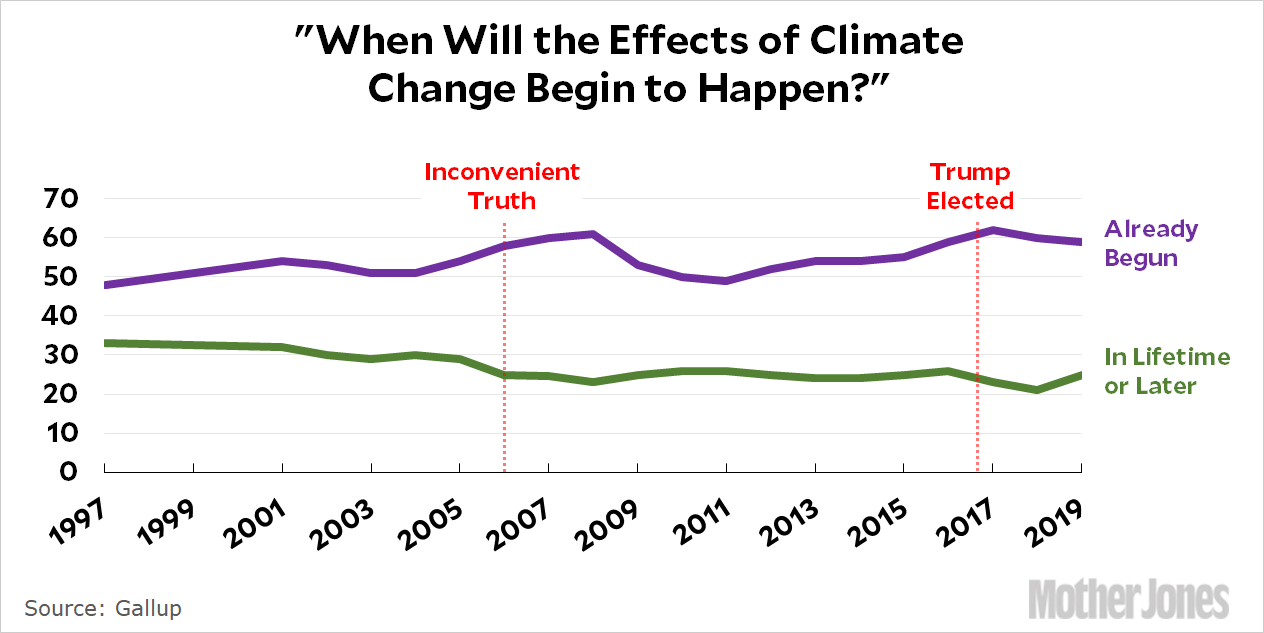
2. Obamacare Finally Becomes Popular
Obamacare is not yet as beloved as Social Security, but 2019 was the year it finally broke out of 50-50 territory for good. It now has a solid 10-point gap in favorability, and that’s likely to grow steadily as even many Republicans finally start to come around.

3. The Poor Are Doing OK. It’s the Middle Class That’s In the Doldrums.
The poor are, by definition, the worst-off segment of society. However, over the past few decades we’ve spent a lot of money on social programs for the poor, and the result is that their effective incomes have grown nearly as much as incomes of the rich. It’s the middle class that’s seen the most sluggish growth. They’re caught in a trap: they make too much money to qualify for assistance but not enough money to participate in the go-go employment and investment economy of the affluent.

4. OTOH, Median Weekly Earnings Are Finally Rising
Although the working and middle classes have seen pretty sluggish income growth over the past few decades, it’s worth noting that they’ve been doing pretty well since 2015. For the first time since the dotcom boom, their weekly earnings are finally rising about 1 percent per year. But how long will this last?

5. The Black-White Test Score Gap Remains Intractable
The gap in achievement test scores between blacks and whites starts in kindergarten and rises steadily with age. The chart below shows the gap measured in standard deviations, which normalizes the size of the gap between different tests with different scales. It starts at about 0.5 standard deviations in kindergarten and rises to just over 1.0 standard deviations by college.
The worst part of this is that we’ve made no recent progress on it. The gap closed some during the ’70s and ’80s, but since then nothing has changed. This is one of our greatest failures as a society, and it represents something real, not just an artifact of the way we do testing. Until we address it, we will never even begin to make progress on racial justice in America.

6. The Kids Are Alright
This is just a reminder that teenagers today are generally in much better shape than we were back when we were teenagers. The chart below is for drug use, but the same trend is visible in rates of teen pregnancy; violence; arrest rates; achievement scores; and so forth. Is it because of lead? Maybe! But whatever it is, it’s real.
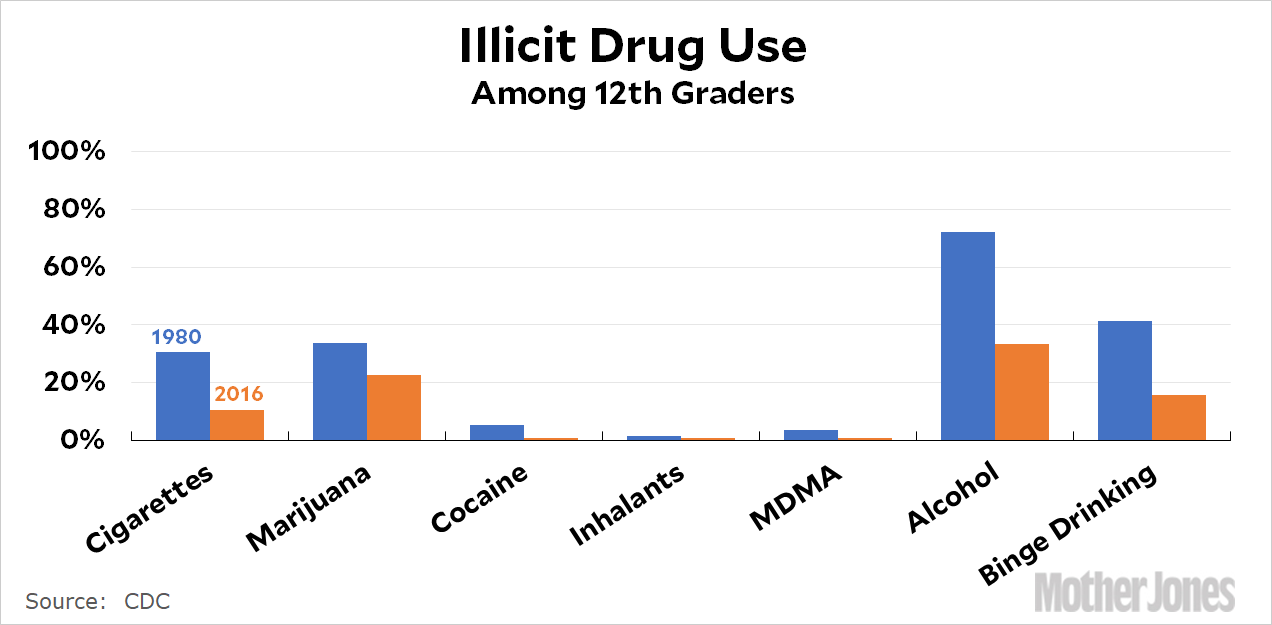
7. Top Tax Rates Don’t Affect Economic Growth
Tax rates on the rich simply don’t affect economic growth more than marginally. There are deadweight losses, as with any tax, but even those are minimal. The only reason to cut taxes on the rich is because the rich like it and will shower you with donations if you do it.

8. Deaths of Despair and the Year 2000
We all know about the recent rise in “deaths of despair.” This chart shows that the rise wasn’t gradual, but suddenly inflected upward in 2000. It’s yet another data point in my hobbyhorse observation that a whole bunch of things all inflected upward right around 2000. But why? I still don’t have a good explanation.
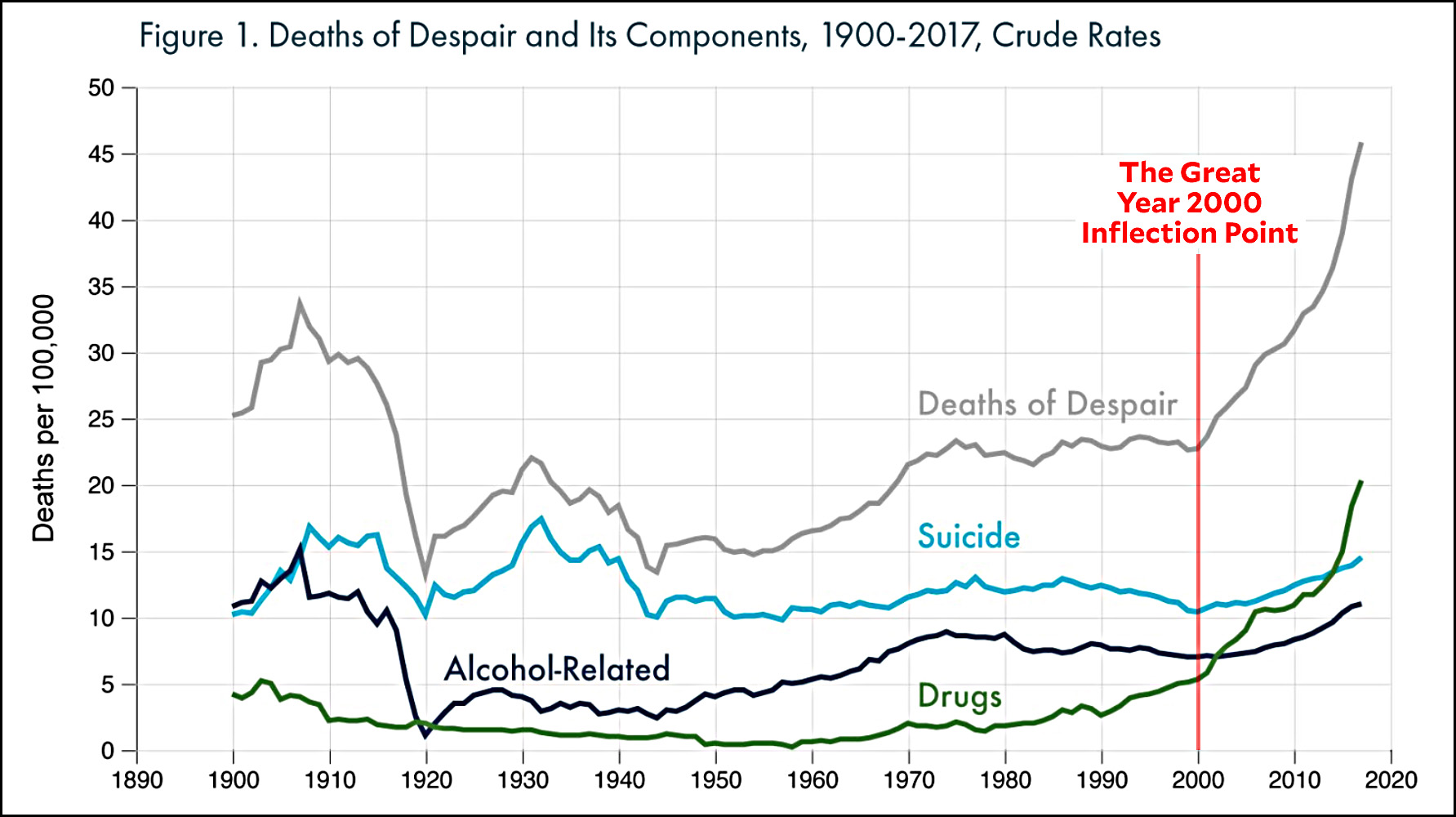
9. Men Settle Down When They Become Fathers
Actually, a recent study showed that they settle down when they learn they’re about to become fathers. And by “settle down,” we mean they don’t get arrested as much. But the effect is permanent and gets even better over time.
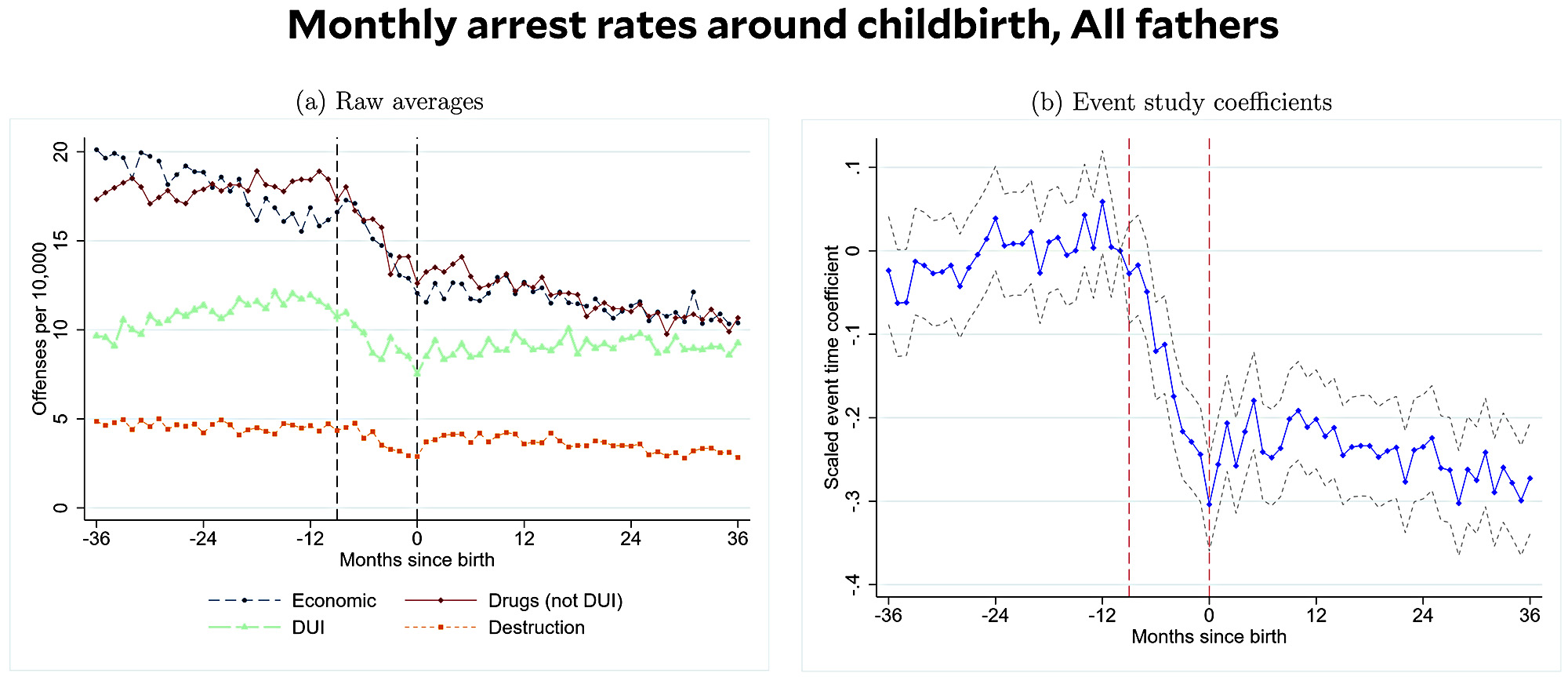
10. Inflation Is Low
Inflation is low right now, and we often wonder if it will stay low. But maybe that’s the wrong question. As this chart shows, US inflation has been generally low ever since World War II with one exception: the oil crisis years of the ’70s and ’80s. But the boomers who currently run the world are obsessed with that era the same way our parents were obsessed with the lessons of the war era and their parents were obsessed with the lessons of the Great Depression. But there’s no reason to be. Maybe the real question is: why do we think inflation should be anything other than low?
By the way: This is yet another chart showing just how much the ’70s and ’80s sucked. They really did, and we’ve learned too many bad lessons from them. If there’s any good reason for pushing the boomer generation out of power, its preoccupation with the suckiness of its formative years is it.
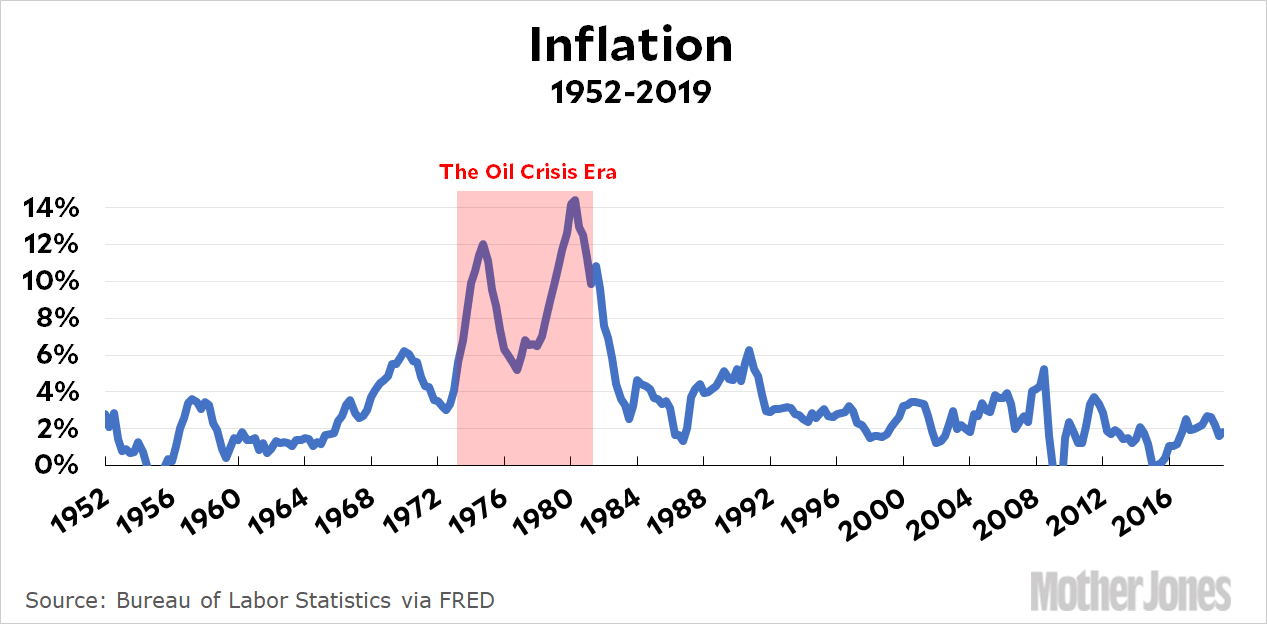
11. Mindset Training Doesn’t Work
Mindset training is a trendy practice that suggests students’ performance can be improved simply by telling them that their brainpower is not fixed forever, but can grow and change with effort. But as the chart below shows, it turns out it doesn’t really work.
This chart, however, is not really about mindset training per se. Who knows? Maybe someone will figure out a way to make it work better someday. It’s really about two things: (1) the great replication crisis and (2) being too credulous about unbelievable claims. In the first case, it turned out that when the initial mindset studies were replicated, they showed no results. This has happened a lot over the past few years and suggests that social science research is seriously flawed. In the second case, it’s a warning that, really, we should all be a little more skeptical of bold claims about small things. Merely talking about mindset can seriously improve student performance? It’s not impossible, but it hardly seems all that likely, does it? We should treat a lot more claims like that.
